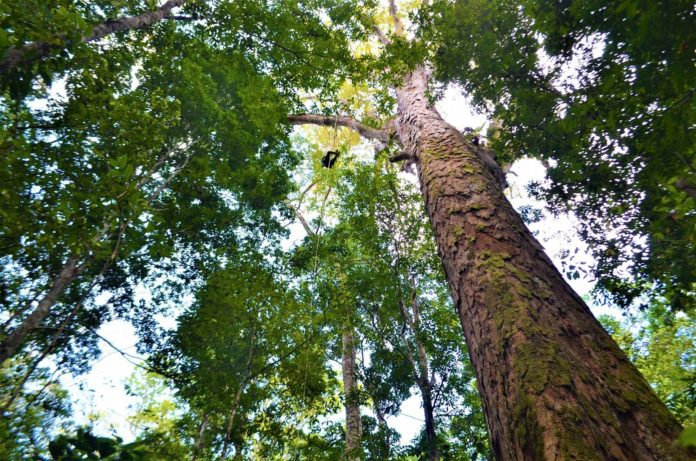Intrepid Brazilian and British scientists have located Amazon’s tallest tree in northern Brazil. They located an unusually large specimen of the giant Dinizia Excelsa species—measuring 88 meters (288-feet) with a circumference of 5.50 meters—in a sanctuary of other Dinizia trees.
Measuring 88.5 meters, or over 288 feet, the tree species beat out the previous record holders by almost 30 meters. According to sources, the tree remains untouched by wildfires that have raged in the rainforest for weeks.
Research coordinator Eric Bastos Gorgens said, “The species generally reach a height of 60 meters. We have a great discovery here and now a commitment to preserve the largest trees in the Amazon.”
Gorgens was inspecting data from Brazil’s National Institute for Space Research (Inpe) when he notices something strange. He primarily thought that it was just a set of numbers on a screen that let the analysts realize giants were growing in the Parú State Forest conservation area in the state of Pará. It took time and dedication to figure what the height measurements represented.
Gorgens said, “It could have been a bird flying by, a tower, a sensor error. So we started to look into what could have given us these numbers that were so far from standard. Moreover, as we started looking at the data more carefully, we realized they weren’t errors. They were, in fact, giant trees.”
Most of the giant trees surrounded the Jari River, a northern tributary of the Amazon River that runs along the border between Pará and the neighboring state Amapá in the eastern Amazon, a part of the Guiana Shield.
Inpe used satellites to scan 850 random swaths of the Amazon between 2016 and 2018—each estimating 12 kilometers by 300 meters, just about 900 acres—in a task to map remote areas of the rainforest.
When Gorgens along with his team shed light on the data, they observed that several of the areas registered during the scans had trees much taller than expected. All of them ended up being from the Dinizia excelsa species.
The Amazon rainforest has long been at risk, with threats of deforestation and contamination caused by illegal mining, logging, and farming pushing it to the brink. A recent increase in fires raging through and destroying large chunks of the region has called more attention to the Amazon’s woes, as well as the need to preserve what’s left of it.
The study is published in the journal Frontiers in Ecology and the Environment.
